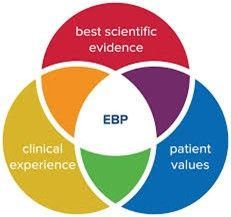STRTP Mental Health Integration: Problems and Solutions
California’s Short-Term Residential Therapeutic Programs or STRTP mental health integration progresses with positive results. Since 2016, when California’s Continuum of Care Reform law went into effect, STRTP’s as former group homes became mental health providers. No longer did STRTP’s need to refer out mental health services to other agencies. Now an STRTP could be a one-stop-shop, providing STRTP and mental health together at one site.
While California’s 58 counties all conduct services in different ways, the state’s STRTP Mental Health standards provide the structure for all services. Though counties are very supportive of the STRTP’s and their provision of mental health services, many problems exist statewide. Here are some examples of these issues and possible solutions:
1. High staff turnover – due to COVID-19, the Great Resignation, and the higher acuity of youths, agencies struggle to retain mental health staff. Especially with the Master’s level Head of Service, where employees at one agency for example last no longer than three months. STRTP’s must first be selective of their staff (not hiring out of desperation), then offer small rewards and recognition. When mental health staff feels part of the STRTP team, the STRTP mental health integration process moves smoothly.
2. Certification delays and inconsistency. STRTP’s must be certified by either the state Department of Health Care Services or their county for billing Medi-Cal (similar to Medicaid) services. Having programs approved can take months or years. Often, two clinical reviewers of programs will look at the same information and critique it differently. This process delays the STRTP’s ability to provide services. Also, some counties over critique the program service documents requesting infinite details. Thus, the end product seems more like a lesson in grammar than in STRTP mental health integration. The whole process should benefit the youths, not penalize STRTP’s. Consistent guidelines and a procedure-based focus will reduce these delays.
3. Lack of psychiatry resources. According to Active Medical Partners, reasons for a shortage of psychiatrists includes the aging out of professionals, burnout, and lower reimbursement rates. While STRTP mental health integration offers higher rates of compensation, few agencies can find psychiatrists willing to work with STRTP youths. Moreover, many telepsychiatry services won't contract with STRTPs because they lack the volume of youths needing services. To combat this problem, telepsychiatry companies can be more flexible in their pricing programs or bundle several agencies together to provide them with the services necessary.
4. Finally, Families First Prevention and Services Act (FFPSA) compliance. As a national law, STRTP’s, as well as Qualified Residential Treatment Programs or QRTP’s must meet the FFPSA standards. For programs over 16 beds, they lose funding because they are considered an Institute for Mental Diseases (IMD). Nursing services are required, along with CARF or COA accreditation. Also, a youth must receive an independent assessment from a Qualified Individual (QI) within 30 calendar days from the date of the referral or from the date the youth is placed in an STRTP or QRTP. While the FFPSA had good intentions to reduce out-of-home care for youths, it interferes with STRTP mental health integration. Further state and federal communication is required to find solutions that benefit the youth and their family, not politicians.
While STRTP mental health services are improving, many obstacles remain and will take time to be solved.
Praxes provides consulting services to STRTP and QTRP facilities in mental health integration. For more information, please contact us.




